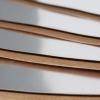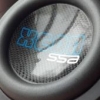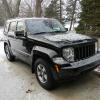Leaderboard
Popular Content
Showing content with the highest reputation on 01/23/2011 in all areas
-
1 pointClose to half the vibration damping/noise mitigation threads on other forums are debates about using asphalt based materials as a vibration damper. I’ve spent way too much time during the last 5 years typing and re-typing responses to these questions. Let’s keep it in one place to reduce litter and redundancy. This topic was my introduction to aftermarket “sound deadening”. I had a noisy car, wanted to quiet it down and started to do research. This was 2005. Several respected “authorities” were vocal advocates for asphalt. Part of this came from the belief that products like Dynamat Xtreme were part of a conspiracy to fleece consumers. Part of it was the often repeated “fact” that roofing materials and vibration dampers sold specifically for aftermarket automotive use were exactly the same thing. One cost pennies per ft² and the other dollars so it was worth investigating. Some of you may remember that Sound Deadener Showdown used to be a testing and review site. Since I wasn’t able to find any conclusive answers on the forums, I decided to buy small quantities of every product I could. Two things were immediately apparent: Nobody had ever had their hands on all of these products at the same time or they would have seen the obvious differences. The people claiming that Dynamat Xtreme and roofing materials were exactly the same thing didn’t know what they were talking about. I discovered a few other things very quickly. Many sellers were making outrageous claims. Some were wildly overstating obvious physical characteristics like thickness and mass/area. Others were either claiming outright that their asphalt products were butyl or were using intentionally deceptive descriptions like “rubberized compound” to describe their adhesive layer. Nobody seemed to be drawing the right conclusion from sellers’ attempts to hide the fact that they were selling asphalt. For several years the argument was about durability. Asphalt had an unhappy tendency to melt or fall off. At the time, there were no reports of butyl adhesive failure – that had to wait a few years until one seller decided to re-purpose some low quality butyl roofing material. I spent a lot of time trying to figure out why this was happening. All of these materials are asphalt with some sort of rubber added to increase heat tolerance. The generally accepted melting point for these compounds is 180°F. That seemed high enough for use in a vehicle, so what was going on? Our perception of the heat these products are subjected to was wrong. We thought in terms of air temperature inside the vehicle, maybe 140°F-150°F? It turns out things are very different at the sheet metal. Park a car in the sun during the summer, south of the Mason-Dixon line and you can easily get to 180°F+. That explains immediate failures in hot climates. An insidious part of this problem is that many failures were reported during the second or third summer, many in fairly mild regions. The explanation was pretty simple. The rubber added to asphalt deteriorates over time when exposed to temperatures much lower than those required to melt the fresh material. As the rubber deteriorates, the melting temperature drops. Suddenly it doesn’t take much heat anymore. The durability question has been answered to my satisfaction. Many high profile asphalt devotees, including some who went to almost insane extremes to install the material “properly” have had their installations fail over the years. A few of the brave ones have come forward and made their results public. The pennies vs. dollars argument still nags. What if you plan to junk your vehicle after a few years (worse, plan to trade it in and don’t care what problem you are passing on)? Is asphalt a reasonable choice when durability isn’t a factor? Nope. There are two main reasons people believe they can substitute asphalt roofing materials for CLDs: They look alike – shiny on one side, black and gooey on the other. They don’t understand how a constrained layer vibration damper works. See: Caddy Shack, swimming pool scene for all you need to know about point 1. Point 2 needs more consideration. I used to believe that vibration dampers work by adding mass to a panel and lowering its resonant frequency below the audible range. This is completely wrong. They work through a fairly complex sequence of events that occur in the adhesive layer and between the adhesive layer and the constraining layer and substrate. I won’t go into the details here, please see: Vibration Damping By Ahid D. Nashif, David I. G. Jones, John Phillips Henderson The important point is that everything depends on the material property viscoelasticity. Basically this describes something that can be deformed and will then return to its original shape more slowly than it was deformed. The strains created during these events account for the conversion of vibration to heat that we’ve all heard about. Butyl adhesives formulated for vibration damping are viscoelastic. Asphalt isn’t – it doesn’t need to be to seal a roof. Asphalt adds mass to a panel. It may stiffen the panel, but since stiffening raises resonant frequency, the two mechanisms are offsetting and reduce effectiveness even further. Those who claim to have used it and had good results aren’t giving you the full picture. These claims can be better stated as: I used asphalt. It was better than nothing. I haven’t used a proper purpose designed vibration damper so I have no basis for comparison. It hasn’t failed yet. Sometimes the endorsement is explicitly stated: I used asphalt and it hasn’t fallen off. Not falling off is a pathetically low standard of performance. Testing I’ve done has convinced me that it takes between 6 and 10 times as much asphalt to achieve something approaching the same result you will get with a real vibration damper. This puts the pennies/dollars question on its head. Add the durability concerns and the huge amount of extra work required and the answer is pretty obvious. I’m sure some will want to argue the points I’ve made here. If that’s you, please stay away from “I used it and it worked for me”. That’s how we got into trouble in the first place and doesn’t make any more sense than concluding that cigarettes are good for you because your grandfather smoked a pack a day and lived to be 90. If you want to go there, please show us some evidence.
-
1 point
-
1 point
-
1 point
-
1 point
-
1 pointlol... no need to apologize but as far as how you mentioned you original post honestly either driver could fit your needs... If you know that you want insane rattling and boom boom, I think people will guide you towards BL.. I'm not looking for insane output when I pick a driver... If it can shake my mirrors a bit and sound amazing with whatever note of bass it is given, that is the driver I pick... The Icon fit my bill so far, and I'm getting a ported enclosure built to SSA spec soon so I can see what I like more... The driver is in my car to stay... So, you have to decide what is more important, notes or output.. The Q apparently hits all the notes with a tighter punch from reviews/threads I have read and it can get crazy loud depending on the enclosure you use... The BL threads I don't frequent much since the driver is meant for a different setup type than I was totally interested in. Here are the descriptions direct from Fi's website about the goals each driver was meant for: Q: The Q Series of subwoofers is our sound quality reference line. Featuring a hefty high strength single magnet motor structure with a heavily bumped t-yoke, the 27mm of Xmax allows for incredibly detailed, tight, and powerful bass. Triple progressive spiders keep the incredible linear excursion of this sub under control, while the extra heavy lead wire feeds the giant voice coil. With technology pulled from the larger BTL line the new Q has more options than ever before. Hyper chamfer, full cooling, high or low Qts topologies, as well as the ability to add an inductance ring in the high Qts design, there is now even more flexibility within the Q platform. Working well in both small ported and sealed enclosures, you do not have to give up your trunk to have strong bottom octave foundation for the rest of your system. The Q series is the new bottom octave benchmark. BL: The BL Series fills the gap between the all out SPL monster and a solid daily driver. Featuring a chamfered solid pole piece and standard double stack motor structure with 8.660" magnets as the foundation for a truly tough subwoofer, you can choose from a variety of options to custom tailor the sub for your exact application. With the addition of the hyper chamfer, or our patent pending heli-cooling channels along with the Daily option, you can bump up the subs thermal capacity for long term daily driving abuse. Looking for an ultra tough SPL sub? Choose the SPL option, the extreme lead wire, one of the 8 layer aluminum flatwind voicecoils, add power, and let it rip. With head cracking upper bass and brutal low end, the BL handles the extremes with ease.
-
1 pointMisconceptions cause problems, things get lost in translation, and sooner or later people start confusing a 4th order to a 4th order bandpass, they are vastly DIFFERENT, hence the correction was made. The issue is now done with, back on topic.
-
1 point
-
-1 points
-
-1 points
-
-1 points
-
-1 pointsWhy Because no amount of money would be worth you harassing me like you are doing this guy right now. I would not be so sure it would stop when you had the amp in hand the way your acting. I want to buy amp
-
-1 points
-
-1 points
-
-1 points
-
-1 points
-
-1 points
-
-1 points
-
-1 points
-
-1 points

.jpg.ea8ac89a2ec7f49de0b9e4027c74f515.thumb.jpg.dc61d2e06476e189721027d6a6eb6027.jpg)





